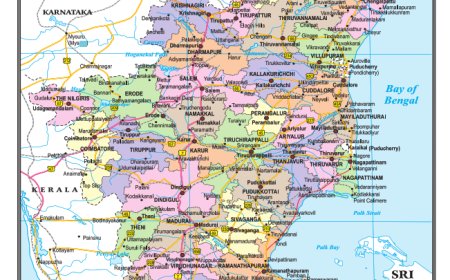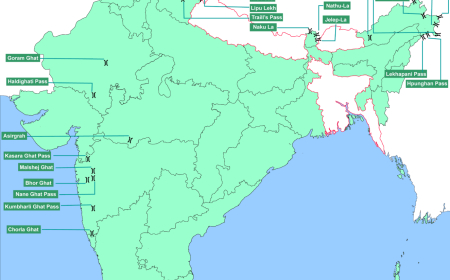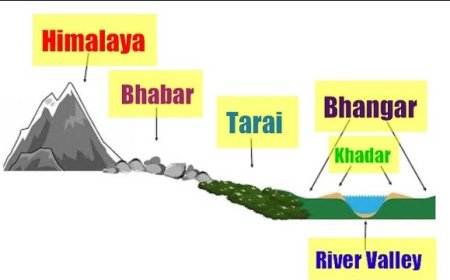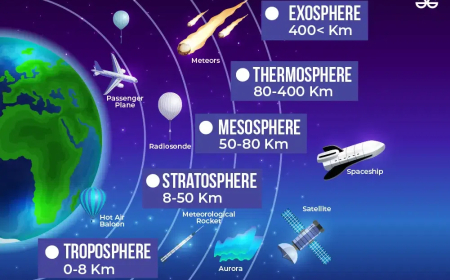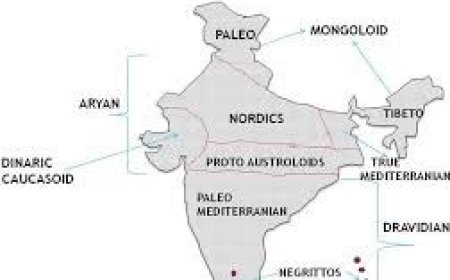Races
Races
Races
- Races- Meaning
- Races are determined on the basis of following characteristics:
- Factors Determining Racial Differences with Examples.
- General Types- 4,
- Blumenbach-5,
- Herbert Risely-7,
- Features and Location
- Concept of Ethnicity
- Difference between Races and Ethnicity
Definition: Race has been defined as a biological grouping within the human species. The race is a group of people with more or less permanent distinguishing characteristics that are inherited.
The most widely found human racial types are based on visual traits such as head shape, facial features, nose shape, eye shape and colour, skin colour, stature, blood groups etc.,
Races are determined on the basis of following characteristics:
Internal Characteristics
- Cephalic Index(head)
- Nasal Index(nose)
- Cranial Index(skull)
- Prognathism Index(jaw)
- Orbital Index(Eye)
External Characteristics
- Complexion
- Stature
- Shape of face
- Texture of Hair
- Blood Group
Factors Determining Racial Differences with Examples
Climatic Changes
- Impact on Physiology: Climate influences physical traits like skin color, body shape, and hair type.
- Skin Color: Darker skin in Africans due to high UV radiation in tropical regions; lighter skin in Europeans due to lower UV radiation in temperate regions.
- Body Shape: Taller, leaner bodies of Nilotic peoples (e.g., Maasai in East Africa) adapted for heat dissipation; shorter, stockier bodies of Inuit people adapted for heat conservation in cold climates.
- Hair Type: Curly hair of Sub-Saharan Africans to protect the scalp from intense sunlight; straight hair of East Asians for better insulation in cold climates.
Hormonal Influence
- Developmental Effects: Hormones influence the development of secondary sexual characteristics.
- Growth Patterns: Taller stature of the Dutch due to genetic and environmental factors, including nutrition.
- Skin and Hair: Higher levels of melanin in African populations resulting in darker skin; hormonal differences leading to different hair textures, such as the straight hair of East Asians versus the curly hair of Africans.
- Gender Differences: Testosterone levels affecting muscle mass and distribution in different races; estrogen influencing fat distribution and other secondary sexual characteristics.
Biological Mutation & Selection
- Genetic Variations: Mutations introduce new traits within populations.
- Natural Selection: Sickle cell trait in African populations providing resistance to malaria.
- Genetic Drift: High prevalence of certain genetic disorders in isolated populations, such as Tay-Sachs disease in Ashkenazi Jews.
- Adaptations: Lactose tolerance in Northern European populations due to dairy farming; higher altitude adaptation in Tibetan and Andean populations through genetic changes in hemoglobin.
Racial Mixture or Miscegenation
- Genetic Exchange: Interbreeding between different racial groups.
- Hybrid Vigor: Increased genetic diversity in mixed-race individuals, such as African Americans with a blend of African, European, and Native American ancestry.
- Cultural Integration: Blending of cultural traits and practices, seen in Latin American countries with mixed Indigenous, European, and African heritage.
- New Racial Characteristics: Emergence of new physical and genetic traits from mixed heritage, such as the varied skin tones and hair types seen in Brazilian populations.
Major Human Races:
-
- Caucasoid
- Negroid
- Mongoloid
- Australoid
Caucasoid
- The Caucasoid is known as "white people" or European race.
- Characteristics: Fair skin, dark brown eyes, wavy hair, narrow nose.
- Some believe that their light skin tone is meant to receive more sunlight due to Europe's climate.
- Some believe that their nose structure is meant to keep the nose moisture from getting dried by the wind.
- Regions: Found in Europe and Eurasia.
Negroid
- They are usually called as "black race". They have the darkest skin tone than other races.
- Characteristics: Dark eyes, black skin, black wooly hair, wide nose, long head, thick lips.
- Regions: Predominantly in Africa- Sub-Sahara Africa.
Mongoloid
- Known as the Asian-American race.
- folding eye lids, almond shaped eyes, yellowish skin tone, and V shaped cheeks.
- Native Americans and Eskimo are also classified as Mongoloid.
- Compared to the other races, they have the least body hair, least body odour, and smallest limb ratio.
- Their facial structure is likely to adapt cold mild wind. They are living in East Asia.
- Characteristics: Light yellow to brown skin, straight hair, flat face, broad head, medium nose.
- Regions: Found in Asia and the Arctic region.
Australoid
- Characteristics: They have visible eye ridge, Wide nose, curly hair, dark skin, short in height.
- Some believe that their visible thick lips helps them to eat stiff foods
- Regions: Found in Australia and parts of Asia-Papua New Guinea.
Bluemenbach-5
In his view, humans could be divided into varieties (only in his later work he adopted the term “races”) referred to as Oriental, American Indian, Caucasian, Malay, and Ethiopian. He assumed that all morphological differences between the varieties were induced by the climate and the way of living.

- the Caucasian (European, “white”) race was placed at the top of the pyramid.
- On one side of the pyramid was the Malaysian (Polynesian, “brown”) race, and
- below that, the Ethiopian (African, “black”) race.
- On the other side of the pyramid was the American (Native American, “red”) race, and
- below that, the Mongolian (Asian, “yellow”) race.
Herbert Risely-7,
- Sir Herbert Risley was British anthropologist and physiognomist.
- Herbert Hope Risley was the Census Commissioner for India in1901.
- He stated that the population of India consisted of seven basictypes: MIDMATS
- Mongoloid,
- Dravidian,
- Indo-Aryans,
- Turko-Iranian,
- Mongolo-Dravidian,
- Aryo-Dravidian’
- Scytho-Dravidian.
- Risley’s classification was revised and published in ‘The Peopleof India, 1908’
- Risley believed that the Mongoloid and Dravidian races werethe original inhabitants of North East India and south Indiarespectively.
Anthropology and Geography
- Anthropology: Studies human races and their classification.
- Geography: Identifies and classifies human races based on habitat and cultural traits.
- Anthropogeography: The relationship between anthropology and geography, resulting in the study of variable racial phenomena in the spatial context of the Earth's surface.
Ethnicity
Ethnicity is a concept referring to a shared culture and a way of life. This can be reflected in language, religion, material culture such as clothing and cuisine, and cultural products such as music and art. Ethnicity is often a major source of social cohesion and social conflict. The world is home to thousands of different ethnic groups, from the Han Chinese (the largest ethnic group in the world) to the smallest indigenous groups, some of which include only a few dozen people. Almost all of these groups possess a shared history, language, religion, and culture, which provide group members with a common identity.
India is a unique country with great diversity in ethnicities, race, religion, language, culture, cuisine, and every other aspect of human society. Indian civilization is one of the oldest in the world and primarily consists of the Indo-Aryans of North India and the Dravidians of South India, the people of the Indus Valley Civilization while the former migrated to the country around 1800 BC. As India has such a diverse cultural demographic, it makes sense that the country is also.
| Aspect | Race | Ethnicity |
| Definition | Classification based on physical characteristics. |
Classification based on shared culture and way of life.
|
| Basis | Biological traits (e.g., skin color, facial features). |
Cultural traits (e.g., language, religion, traditions).
|
| Examples | Caucasian, African, Asian, etc. |
Han Chinese, Hispanic, Punjabi, etc.
|
| Number of Categories | Fewer, broader categories. |
Numerous, often specific to particular cultures or regions.
|
| Scope | More generalized and broad. |
More specific and detailed.
|
| Origins | Rooted in physical anthropology and biology. |
Rooted in sociology and cultural studies.
|
| Fluidity | Generally seen as less fluid, though perceptions change over time. |
More fluid, as individuals can adopt new cultural traits.
|
| Use in Society | Often used in census and demographic data. |
Used to understand cultural diversity and social dynamics.
|
| Examples of Criteria | Skin color, hair type, bone structure. |
Language, religion, dress, customs.
|
| Social Impact | Can lead to stereotypes and discrimination. |
Can foster a sense of community or social conflict.
|
Dravidians
The Dravidian people are any native speakers of the Dravidian languages in the Indian Subcontinent. Almost all the Dravidians live in the southern part of India. The five major ethnic groups of Dravidian people in India are Tamil, Telugu, Kannada, Malayalam, and Tulu.
The ancient Indus Valley civilization in India was believed to have been of Dravidian origin in northern India, but then the Dravidian people were pushed south when the Indo-Aryans came in and the Kuru Kingdom in northern India arose. Later, South India was dominated by the three Dravidian kingdoms of the Cheras, Cholas, and the Pandyas. These three kingdoms have been shown to sponsor the growth of literature, music, and the arts and to have done extensive trading.kingdoms also supported and were tolerant of
Buddhism, Jainism, and Hinduism. The major languages spoken by the Dravidian people are Tamil, Telugu, Kannada, Malayalam, and
Brahui.
What's Your Reaction?







